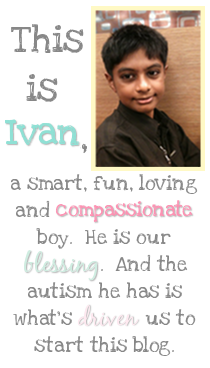I recall one afternoon, when I was having a conversation with another mum, as we were waiting on our boys to finish school. Ivan was around five back then. I was still having very mixed and unpleasant emotion attacks. Life felt miserable and the future was dark. The parent I was talking with had an older boy, she had pasted the stage I was in. She told me something, that opened up my eyes. She said, "Be thankful we have sons, can you image their lives and ours, if we had them as daughters?" Just then, I felt a quick wake up call. Yes, I was thankful that Ivan was a boy. Puberty would be much easier on a boy, and that was just one aspect. From that day one, I chose to make sure I looked out for the silver lining.
We do see a majority of children affected by autism and similar diagnosis, to be boys. But I wish to draw your attention today, to one PDD (Pervasive Development Disorder) that attacks the majority of girls. In the group of PDDs, Rett's syndrome is one of the most disabling. It is known to be affecting the majority of the female of our species, by the age of twelve.
A Little History
 Andreas Rett, M.D. was the very first to introduce this in the year 1965 in Vienna, Austria. It has been known to show normal development in the early years, followed by an onset of the disorder between six to eighteen months of age.
Andreas Rett, M.D. was the very first to introduce this in the year 1965 in Vienna, Austria. It has been known to show normal development in the early years, followed by an onset of the disorder between six to eighteen months of age.
"At the start, RS girls (a very slight percentage of boys are diagnosed with RS, and most die in utero) will exhibit appropriate speech (using words or phrases) and motor development as well as age-appropriate sitting and walking. But, eventually, the child will lose use of her hands and exhibit distinctive repetitive hand movements, slowed brain and head growth, abnormalities when she walks, seizures, and MR (Mental retardation).
The girl enters a period of regression, losing speech and motor skills. This period of regression between 1 and 4 years old can be sudden, but it can also be slow and indistinguishable from normal behavior and be missed in diagnosis if the symptoms come on singularly and slowly.The regression can last for a few days or it can go on for months."
What are the Sign & Symptoms to look out for?
- autistic behaviors
- bone fractures
- cessation of social interaction
- cold, sometimes bluish-red or purple extremitites
- constipation
- decreased body fat and muscle mass
- diminished eye contact
- EEG abnormalities and changes
- extreme motor control problems
- gait abnormalities (unsteady, wide-based, and stiff-legged)
- hand tapping and hand wringing
- irregular breathing patterns such as hyperventilation
- irritability
- loss of motor skills
- loss of speech
- MR (mental retardation)
- muscle rigidity
- normal development before symptoms arrive
- obsessive-compulsive behaviors
- persistent clapping
- persistent hand washing
- reflux
- scoliosis
- seizures
- sleep apnea
- slowed growth (after 1 year old)
- slowed head growth (after 3 months old)
- slowed weight gain (after 1 year old)
- small feet
- small head (microcephaly)
- spasticity
- swallowing problems
- teeth grinding (bruxism)
- toe walking
- torso shaking
- weak muscle tone (hypotonia); dangling arms, legs, and head are usually the first symptoms
- well behaved
I hope this blog entry is helpful to you.
Book: Alphabet Kids: From ADD to Zellweger Syndrome by Robbie Woliver





















No comments:
Post a Comment